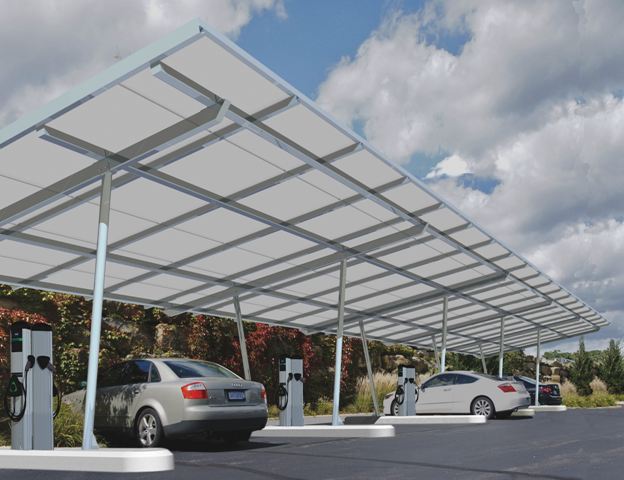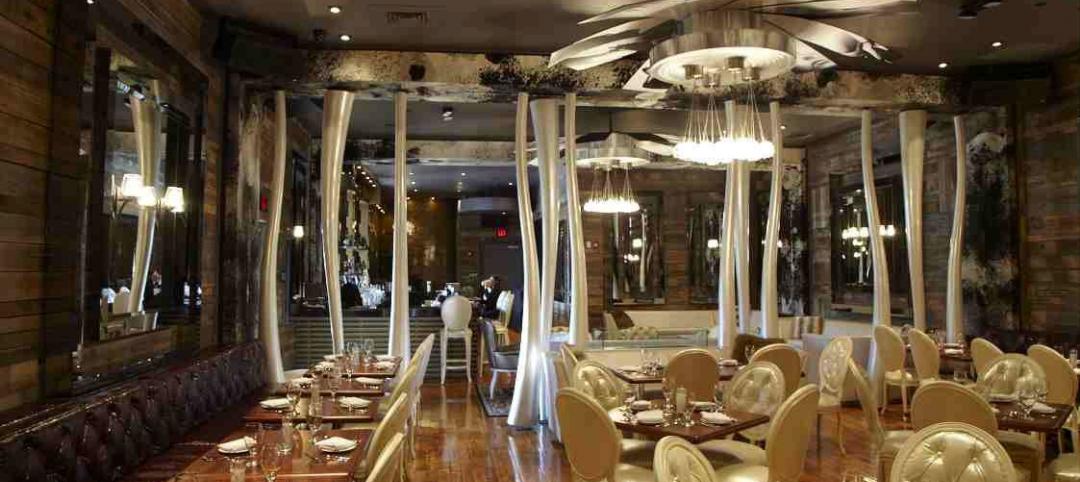Designers no longer need to sacrifice aesthetics to achieve the benefits of building-integrated photovoltaics in canopies and walkways. New solar PV canopy systems from Duo-GardIndustries Inc. are custom-designed and engineered to integrate as part of a building’s architecture.
The canopies are engineered with a sealed skin and continuous components, eliminating any gaps between panels. This achieves a weather-tight structure for all climatic regions. All wiring is built into framing channels for a clean, contemporary appearance.
Available currently in standard sloped and ridge styles, the canopies are configured for the size and scope required for each project. The turnkey approach includes in-house design, engineering, fabrication, and installation services, as well as technical support to specify, plus field support on photovoltaics. A new in-house steel fabrication facility, opened earlier this year, enhance the ability to customize each project.
Aesthetically, the PV panels can be charcoal gray or blue. Designers can also specify integrated translucent multiwall polycarbonate panels to add diffused daylight. The architectural canopy addition follows Duo-Gard’s introduction earlier this year of solar PV charging stations. BD+C
Related Stories
| Jan 27, 2012
BRB Architects designs new campus center for Molloy College
Intended to be the centerpiece of the College’s transformation from a commuter college to a 24-hour learning community, the “Public Square” will support student life with spaces such as a café, lounges, study rooms, student club space, a bookstore and an art gallery.
| Jan 27, 2012
Columbia University’s New Core Laboratory aims for LEED Silver
Construction manager Sordoni Construction Co. along with the design team of Payette Architects and Vanderweil Engineers will provide design and construction services to renovate the majority of the existing Core Lab building to create the new Lamont Center for Bio-Geochemistry.
| Jan 26, 2012
Three dead, 16 missing in Rio buildings collapse
The buildings, one 20 floors high, collapsed on Wednesday night in a cloud of dust and smoke just one block away from the city's historic Municipal Theater.
| Jan 26, 2012
Siemens launches smoke detection knowledge center
New knowledge center web site demonstrates efficacy of smoke detection.
| Jan 26, 2012
Hendrick Construction completes Osso Restaurant in Charlotte
Designed by François Fossard, Osso's upscale interior includes tapered, twisted decorative columns and an elegant fireplace in the center of the lounge.
| Jan 26, 2012
HOK partners with USGBC on design of Haiti children's center
Passive design principles give form to a sustainable, restorative environment for the children of Haiti.
| Jan 26, 2012
American Standard names Gould as president and CEO
Gould succeeds Don Devine, who led the successful turnaround of American Standard Brands.
| Jan 26, 2012
Summit Design+Build completes law office in Chicago
Applegate & Thorne-Thomsen's new office suite features private offices, open office area, conference rooms, reception area, exposed wood beams and columns, and exposed brick.
| Jan 24, 2012
New iPad app ready for prime time
Siemens’ versatile application connects users to APOGEE BAS control and monitoring functions via wireless network connectivity. The application directly interacts with BACnet/IP and Siemens APOGEE P2 field panels.
| Jan 24, 2012
Vyhanek joins Thornton Tomasetti’s Kansas City office
Vyhanek will assemble a new MEP team in the Midwest to support Building Performance and Property Loss Consulting practices.

















